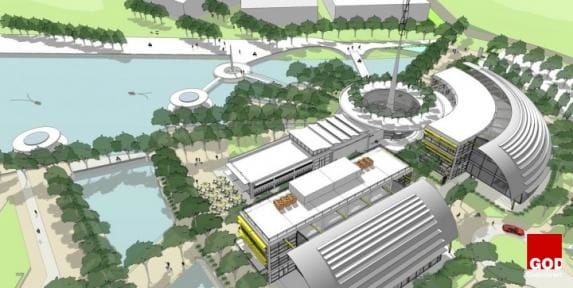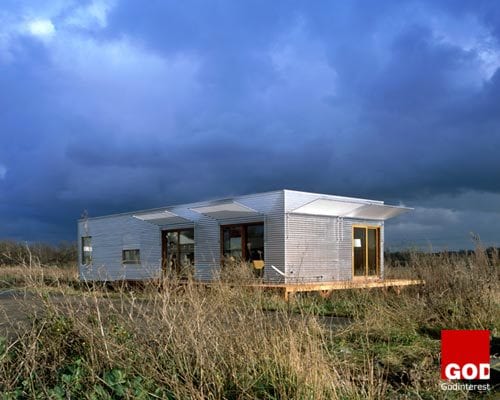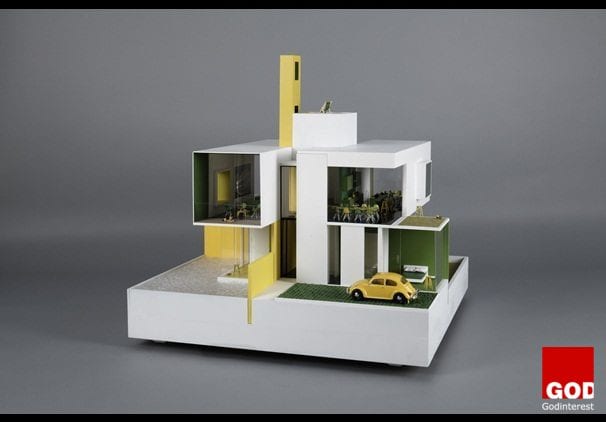A Day in the Life of a Project Manager
We all know that project managers are responsible for managing projects through to completion while remaining on time and within budget, but how exactly do they do it? What does a typical day look like for a project manager?
Here’s a sample of what a typical day might look like for a project manager.
The Early Bird Gets the Worm, Success Comes to Those Who Prepare Well and Put in Effort
8.30 am: Starting the day
After settling in for the day’s activities, it’s time to plan out the day. Start up the computer, email clients, draft team schedules, organize time sheets and create the to-do list.
To-do lists help managers and their teams stay on track. If a manager notices that one team member has yet to deliver an assignment, they can address this issue first thing in the morning; otherwise, delays can build up and affect the project. Likewise, lists help managers see the next course of action for projects.
9:15 am: Time to get moving
Efficiency is a must and there is no time to be wasted in project management. After a quick review of project plans and to-do lists, the manager must be prepared to get his team moving right away.
Round up team members, review the project’s current position and emphasize the next course of action. In order to get the team moving on assignments, strong project managers set deadlines throughout the day.
Morning team meetings are also necessary to make sure each member understands the project and their assignments. It’s also a time to answer any questions for clarity or to get feedback or concerns from individuals.
While daily group meetings can be important, they are not always necessary and can be counter-productive. If the team is on the same page and everyone is ready to tackle the tasks of the day, spend a short period re-grouping so that the team can get on and complete their assignments. There’s no need to spend hours planning and reviewing.
10 am: Meetings, meetings, meetings
More than one project manager will be more than likely in the office and they will all need to work together for the benefit of the programme. This is why meetings with other managers and higher ups are necessary in a project manager’s day.
Meetings allow each project manager to go through the status of their respective projects and to track the weekly schedule and other deadlines. It is also a time to address any business-critical tasks that might come up.
It’s worth considering that only 7% of communication is spoken. The other 93% is made up of tone (38%) and body language (55%). So although facts and figures are easily communicated via email, letter or phone, an actual discussion or negotiation is best handled where you can see the other person and therefore are able to see for yourself what their tone and body have to say on the matter.
10:30 am: Tackling the small stuff
Meetings will be on and off throughout the day for project managers, which is why it’s important to tackle the small tasks in between appointments. Small tasks include wrapping project reports, booking future meetings, answering correspondences with other colleagues, reviewing items and team reports among other things.
It’s also important to schedule post-mortem meetings with the project team to review the success of projects in order to apply any lessons learnt to future projects.
11 am: Project kick-off meeting
When one project ends, another begins, which means it’s time for yet another project kick-off meeting. Kick-off meetings can take on various forms, depending on the type of business. However, they all share the same basic needs.
Every individual involved with the new project should be in attendance and have the latest version of project specifications in written form. As project manager, it might be wise to send this to team members several days before the kick-off meeting to ensure everyone has time to review.
During a kick-off meeting, it’s important to review the overall goals for the project, both commercial and technical details, break down functional requirements, and spend time for discussion and questions. By allowing team members to communicate questions and share ideas, it opens the lines of communication and may bring up potential concerns that might have been missed in the initial planning stages.
Conclude kick-off meetings with a definition of the next steps and be sure individuals are aware of deadlines and their assignments.
11:30 am: Reviewing project specs, budgets and scheduling submissions
Other important tasks to tackle in between meetings include reviewing specifications and budgets and schedules for future projects. If a project begins that day, now would be a good time to apply the finishing touches to the project documentation before presentation and approval.
When it comes to establishing project estimates and budgets, a project manager must bring all of his experience into play in order to create a realistic budget that includes wiggle room for factors such as project complexity, team experience and skill levels, stakeholders involvement, time needed, third-party services needed, and contingency allowances among many other things.
It’s Not Easy to Squeeze in a Lunch Break, but It’s Often Necessary for the Project Managers Health and Sanity
12 pm: Lunch
In the midst of the seeming chaos that is project management, be sure to fuel up for the rest of the day’s work. Lunch is also a great span of time to check in with team members to make sure they are still on target for later-day deadlines.
2 pm: Launching the next project
After digesting lunch, it’s time to launch the next project. Get the whole team ready to go live and present the project to the client and begin testing aspects of the project in a live environment. It’s a time to spot problems and address them and review schedules and deadlines and other project needs.
3 pm: Time for everything else
The final two hours in the office are spent addressing everything else on the project manager’s plate. A project manager must be good at multi-tasking and whatever duties couldn’t be accomplished throughout the day are reserved for the final hours. Most of the time, lower priority tasks are reserved for afternoon hours. These tasks could include project update meetings with various departments, logging finances, reviewing monthly project schedules, approving time sheets, writing weekly reports, sorting purchase orders and communicating with suppliers. There are so many other small to-do list items that project managers are responsible for, but are often overlooked.
Spending Time at the End of the Day as Well as the Beginning to Review and Plan Will Only Help You Succeed as a Project Manager
5 pm: Review the day, plan for tomorrow
Before heading home, review the day’s list and what’s been accomplished. Anything that has been added or was left unfinished should be scheduled for the next day or sometime throughout the week. Reflect on your team’s work and clear the email inbox. Use a filing system that makes sense for you and be ruthless about deleting stuff. The beauty of an empty inbox is a thing to behold. It is calming, peaceful and wonderful.
The Good, the Bad and the Ugly of Project Management for Christian Leaders
It’s Monday afternoon at the office. The week has only begun, but you’re already swimming in a sea of memos, spreadsheets, and schedules. Just as you’re daydreaming about what leftovers you might reheat for a late dinner, your boss pokes his head into your office. He or she mutters something about quotas and deadlines before he or she drops the bomb about a “little project” he or she needs you to complete by the end of the week. And just like that, you know you’ve been handed a nightmare but for whatever reason accept the challenge.
“According to the Cranfield School of Management in the Uk, 68% of Projects Are Destined for Failure Before They Even Start.”
The lack of project management training or experience of many Christian leaders can be an enormous stress factor for them. Whilst natural organizational ability is enormously helpful, in itself it is no guarantee of any project being both successful and low stress.
What is a nightmare project? It’s something we’re all familiar with. The boss assigns us some vague task and a deadline but leaves the means to a solution up to our creative intellect.
So how do you solve the problem of this dreaded “project”?
1. Understand the scope of the project
First things first, create a list to layout your ideas on how to go about the job at hand. Write out questions you might have that need to be answered, people you might need to work with or talk to in order to understand what work must be done.
Without fully understanding what work must be done, it is impossible to accurately estimate a project’s schedule or budget.
After creating a list, share your ideas with colleagues. Work with peers who have the same goal and share the same work ethics as you. Too often, when faced with an unrealistic project, we tend to work with just about anybody who wearily agrees to have their name on board. The enthusiasm of a new project quickly fades when actual work is needed. Instead of “How can I help?” were met with “I’m busy right now” and “Can it wait until next week?” The sponsor, project manager, and project team must share a common understanding of the scope of the project.
2. Get estimates from the people who will be doing the work
To avoid the stress of friendly fatigue, create a solid plan of action with your co-workers. Assign duties and responsibilities and set a deadline for each task.
4. Re-estimate as soon as you realize an estimating assumption was wrong
Don’t get discouraged if people and other things fall through. Even though it’s frustrating with the broken promises, missed deadlines, mistakes, and poor quality outputs. As soon as you realize a mistake was made, assess the impact and re-estimate the project.
“Unfortunately When Project Managers Spend the Majority of Their Time Trying to Achieve the Unachievable, the Result Is Frustration and Potential Burnout.”
But say you’ve followed those steps and were able to remain positive throughout this grueling week. You completed the assignment, whether enthusiastically or completely drained of all energy, only to be told the higher-ups decided to go a different route and don’t need the results of your project after all. “Good effort, though,” your boss tells you as he or she hands back your laminated report.
If you find yourself in this situation, just remember to never say “yes” to a “little project without first taking a look at what you’ve been handed.
Top 10 Project Management Myths Debunked
Since the dawn of time, mankind has used myths to make sense of the uncertainty that surrounds us. In the early 1990s a lot of people believed that project management was the best kept secret in business. However, because project management was not seen as a prevailing profession at that time, it suffered from a lack of awareness which was in a sense, a double edged sword. Those who were knowledgeable in the practice of project management became extreamly valuable to organisations and pioneers for the profession.
These early adopters were able to convince organisations that project management practitioners were needed. Myths around project management began to form in the business community and as the role of the project manager was unclear, questions were raised as to what project management was and what it could offer organisations.
The definition of the word myth is a “widely held, but false belief or idea.” Here, we’re going to examine 10 of the most pervasive PM myths that have emerged.
Myth #1 – Contingency pool is redundant
This is one of the most ‘mythical’ myths that has plagued the industry for a long time. Coupled with the tendency to presume that ‘real work’ is tantamount to implementation or building something concrete and you have the perfect recipe for project disaster. The thought pattern behind this approach typically originates from budget constraints and/or having unrealistic expectations. As we all know, or should know, the unexpected happens quite regularly. An effective contingency plan is important as it aims to protect that which has value (e.g., data), prevent or minimise disruption (e.g., product lifecycle), and provide post-event feedback for analysis (e.g., how did we fare? did we allocate funds correctly?).
Myth #2 – Project Management software is too expensive
If your idea of project management software involves purchasing servers, and purchasing a software application from a major vendor for a small practice with 10 practitioners then, yes, it is too expensive. If, however, you have gone cloud and elected to use a powerful web-based project management solution (such as Smartsheet), then you are likely to save thousands of pounds while reaping the benefits of a pay-as-you-go price structure. The present, and future, lie in cloud solutions that provide equal, or superior, functionality at a fraction of the cost.
Myth #3 – Project Management methodologies will slow us down
Project managers have a reputation of using process-intensive methodologies that favour ideology over pragmatism. In some instances this may, indeed, be the case when there is a mismatch between a specific project management approach and the organisation’s acutall needs (e.g., a process-driven method, such as PRINCE2, may not be appropriate for a slightly chaotic environment that favours an adaptive approach, such as Scrum). So, in sum, put down the paint roller (“Project Management isn’t for us!”) and take out your fine-bristled brush (“The Critical-Chain method may not be our cup of tea, but Agile on the other hand”¦”).
Myth #4 – Facts and figures are more important than feelings and perceptions
While facts are very important, projects are often derailed and sabotaged because of false perceptions. The PM must pay attention to both fact and fiction to navigate through turbulent organisational change.
Myth #5 – Project managers need to be detail oriented and not strategic in nature
While it is of the utmost importance for the project manager to understand how to read the details of the project, they must also understand how the project supports organisational objectives. Having a strategic perspective adds great value to the skill-set of the project manager.
Myth #6 Rely on the experts in everything that you do
It is true, we do need to rely on the experts but our trust can not be a blind faith. The job of the project managers in this area is twofold. First we must extract information and second we must verify that the information is accurate. A good example of this is asking a planner to provide an estimate on the effort required to perform a task. In some instances team members forget to include tasks which ultimately results in a faulty estimate.
Myth #7 All the battles have to be fought and won so that we can succeed
Project managers sometimes make the assumption that they need to stand firm to get the job done, however, coming to compromise on a particular issue is often a better course of action in order to win the war.
Myth #8 Project Managers can wear multiple hats
Wearing different hats can be extremely confusing. This is especially true if the project manager is asked to be a business analyst or technical expert on top of serving in their PM role. They end up doing both roles with mediocrity. When we “wear two hats” we essentially tell ourselves that both hats fit on one head at the same time. However, what happens if the demands of two roles conflict and what assurances do we have that we’re managing the inherent conflict of multiple roles and the risks the roles introduce? Sadly, multiple roles become more common as we move up the management hierarchy in an organisation, and that’s exactly where potential conflicts of interest can do the most harm.
Myth #9 Once the risk register is created, it’s full speed ahead
Risk management provides a forward-looking radar. We can use it to scan the uncertain future to reveal things that could affect us, giving us sufficient time to prepare in advance. We can develop contingency plans even for so-called uncontrollable risks, and be ready to deal with likely threats or significant opportunities. Too often, it’s not until a catastrophic event occurs and significantly impacts project progress that ongoing risk reviews are conducted.
Myth #10 Project managers can not be effective in their role unless they have specific technical expertise in the given field that the project falls within
You don’t need to be an engineer to manage a construction project or a IT technician to manage a software development project. All you need is a fundamental understanding with strong PM skills to manage the team. Experience in the field helps but does not guarantee success.
Project management is challenging enough without the myths. The profession has come a long way since the 1990s and some of these myths are fading. However, we still see remnants of them in one form or another. Great projects cut through false assumptions and confusion, allowing their teams to make smart decisions based on reality.
These are just 10 project management myths, what are yours?
9 Suggestions for Overcoming Barriers to Good Design When Using Modern Methods of Construction (Mmc)
The term ‘Modern Methods of Construction’ (MMC) embraces a range of technologies involving various forms of prefabrication and off-site assembly.
MMC is increasingly regarded as a realistic means of improving quality, reducing time spent on-site, improving on-site safety and addressing skills shortages in the construction of UK housing.

The variety of systems now available potentially allows the designer enough choice to sidestep problems deriving from constraints posed by the use of any one method. MMC systems, from closed-panel timber framed systems to bathroom pods are a palette from which designers can make choices. They are not necessarily stand-alone solutions that anticipate all the needs of an individual site and can be mixed and matched as appropriate.
These limitations are not obstacles to achieving the good design in MMC-based schemes, but may hinder the incorporation of more complex and innovative types of MMC from which greater overall benefits may be obtained which are considered under the following headings:
1. COST UNCERTAINTY
There is no doubt that, given products of comparable performance the key issue in purchases of MMC construction systems is the price. At present not enough is known about the potential costs of using volumetric and closed panel systems to enable confident specification at an early date. This inhibits designers from exploring the full potential of MMC systems. This is particularly true of the less repetitive, small, one-off scheme, where a smaller margin of benefits is gained from using MMC. The principal barrier to the uptake of MMC, therefore, seems to be the perception of cost uncertainty with respect to using more complex systems. Without doing substantial project-specific research, consultants and their clients simply do not know with enough degree of certainty how much the volumetric or closed panel systems are likely to cost, and what would be the savings to overall project costs produced by potential speed gains to offset against increased capital expenditure.
This is due to the complexity of assessing the ratio of cost of repetitive elements where pricing is relatively straightforward to the cost of adjusting elements or building in another method for the abnormal condition. Decisions to use innovative systems are likely to be made once designs are well progressed to enable teams to be more certain of costs. This can increase the potential for change or result in design compromise as the designer attempts to incorporate the specific limitations of a particular system in their design.
In an attempt to improve this situation, the MMC consultant and or clients could pull together a directory of MMC expanded to include cost comparison data. The huge range of variables involved inevitably makes this difficult, but a database of current construction cost information would be an invaluable resource.

2. PLANNING PROCESS AND EARLY COMMITMENT TO A SYSTEM
The time it can take to obtain planning permission has obvious implications both for project cost but also, in some circumstances, for architectural design innovation.
Most of the more complex types of MMC have an impact on dimensioning, the choice of external finish and detailing may have some effect on the buildings mass. Therefore, the construction system should be chosen prior to a planning application to avoid abortive work, redesign or amendment, or even resubmission for planning permission.
However, developers whose money is at risk, frequently hold off deciding on the construction technique until the last practicable moment, in order to get any advantage from fluctuations in material or component pricing.
Given the potential for lengthy duration of planning applications, this means that there is little incentive to prepare initial designs for planning with a prior decision to incorporate MMC firmly embedded. In cases where the developer has a financial or business link with the supplier, this is less likely to be the case. As the majority of commercial or residential developments involve some kind of arrangement with a developer, agreement on construction systems is often left to the stage after planning.
3. TIME INVESTMENT
Another very significant factor is the time investment required at the early stages of projects. This is needed to develop the design when the project is still at risk. There is a direct relationship between the scale and complexity of MMC component and the amount of time required to develop a design at an early stage.
The introduction of advanced or complex MMC techniques into the design process is potentially costly to the design team. A significant amount of research is needed to explore alternative systems, to obtain verification of suppliers’ credentials, investigate mortgage and insurance issues, visit previous sites, talk to system suppliers, obtain technical performance guidelines, understand junctions and interfaces, coordinate other consultants, obtain building control input and so on.
For a consultant, the only way of investing in this research is either through timely payment of increased fees by a visionary understanding client or through the anticipation of increased future productivity through repetition when a project is phased, or large enough, or likely to be followed by another similar project.
The potential of learning a system and then being able to repeat lessons learned efficiently is a powerful incentive for both client and consultant. By contrast, HTA’ s project at Basingstoke is an example of a phased project with a three to four-year duration allowed the design team to repeat various elements of the design, and the manufacturer to develop improved solutions to technical and supply problems.

4. INSUFFICIENT COMMUNICATION
Improved dialogue at the outset of the project is vital if design quality is to be maximised. Constraints and opportunities implicit within a particular system are more easily incorporated into design if partners communicate pre-planning. Increased early communication can be fostered through improved long-term partnering relationships.
Clients should also partner with a range of suppliers and architects so that choice and flexibility is not restricted.
5. INEXPERIENCE
Generally, the inexperienced client or design team will have to do more research, with the result that there is likely to be significant design development without a specific system being incorporated.
This is a disincentive to using a more complex system involving a higher proportion of MMC, where early decision making and knowledge of a system’ s capabilities have a decisive influence on the nature of the architecture. However, encouraging the take up of MMC through the use of a dedicated funding mechanism may assist clients in finding time for research into suitable MMC techniques.

6. SUPPLIER’S ROLE
Site capacity studies and early stage pre-planning design studies could be undertaken directly by system suppliers on behalf of clients, cutting out the usual procedure of commissioning design work by independent consultants.
7. ASSUMPTIONS
There are a number of assumptions that are generally held about certain types of MMC that may have been valid at one time but are no longer true today. There is a need for reliable and up to date information comparing system criteria, performance data, timescales, lead in times, capacity, construction time, sequencing issues, limitations, and benefits.
Therefore it would be helpful if a forum for discussion and experience exchange was set up.
8. DEMONSTRATING THE BENEFITS OF MMC
There is still a large amount of skepticism about the need to go very far down the line with MMC. This is reflected in the acceptance of the desirability of maintaining or indeed enhancing the pool of traditional craft skills throughout the UK.
A balanced view is that there is a demonstrable need for the wider use of MMC which is recognized by both industry and government. The best way for clients and the public generally to become more confident and knowledgeable about the quality of design achievable through MMC is to see it demonstrated.
9. FINANCIAL INCENTIVES
There is no doubt that spreading the burden of investment through the life of a project helps to ensure a higher standard of specification and hence quality. In the Netherlands, a ‘ Green Financing’ system has been developed by the Dutch government that provides favorable loan finance when certain sustainable standards are reached. In the UK, the Gallions HA has pioneered a study of this, based on a scheme in Thamesmead, ‘ the Ecopark project’.

The 8 Biggest Risks of Big Data Projects
43 Great Quotes To Inspire You To Be a Better Christian Leader
Anyone who has responsibility for the work of others understands the unique challenges that come with managing people.
Over the years, various thought leaders have come up with pearls of wisdom in the form of quotations that when given some thought, have a lot to teach us. Sometimes a simple quote is just the thing to lift our spirits, to make us smile or to give us the energy to keep going when we’re feeling low.
Here are 43 such quotes to make us better Christian leaders.
- “The Christian leader of the future is called to be completely irrelevant and to stand in this world with nothing to offer but his or her own vulnerable self.” – Unknown
- “In most cases being a good boss means hiring talented people and then getting out of their way.” – Unknown
- “The good news is, God has provided us with a LifeBook to help us – the Bible.” – Unknown
- “Encouragement is the oxygen of the soul.” – John Maxwell
- “There’s only two things you can start without a plan: a riot and a family, for everything else you need a plan.” – Unknown
- “Rejection is an opportunity for your selection.” – Unknown
- “People don’t care how much you know until they know how much you care.” – John Maxwell
- “Leadership is getting people to work for you when they are not obligated.” – Fred Price
- “Running a project without a work breakdown structure is like going to a strange land without a roadmap” – J Phillips
- “You don’t have to hold a position in order to be a leader.” – Henry Ford”
- “Have a good plan, Execute it violently, Do it today” – General Douglas McArthur
- “The single biggest problem in communication is the illusion that is has taken place.” – Unknown
- “To improve is to change; to be perfect is to change often.” – Winston Churchill
- “A project without a critical path is like a ship without a rudder.” – D. Meyer
- “If your actions inspire others to dream more, learn more, do more and become more, you are a leader.” – John Quincy Adams
- “What’s measured improves.” – Unknown
- “A goal without a plan is just a wish.” – Antoine de Saint Exupry 1900-1944, French writer and aviator
- “If it is not documented, it doesn’t exist. As long as information is retained in someone’s head, it is vulnerable to loss.” – Unknown
- “It must be considered that there is nothing more difficult to carry out nor more doubtful of success nor more dangerous to handle than to initiate a new order of things.” – Machiavelli 1446-1507, Italian statesman and philosopher
- “No one can whistle a symphony. It takes a whole orchestra.” – Unknown
- “Luck is for the ill-prepared.” – Unknown
- “Tell me and I’ll forget, show me and I may remember, involve me and I’ll understand.” – Chinese Proverb
- “Of all the things I’ve done, the most vital is coordinating the talents of those who work for us and pointing them towards a certain goal.” –Unknown
- “PMs are the most creative pros in the world; we have to figure out everything that could go wrong before it does.” – Fredrik Haren
- “Why do so many professionals say they are project managing when what they are actually doing is firefighting?” –Unknown
- “The first responsibility of a leader is to define reality. The last is to say thank you. In between, the leader is a servant.” –Unknown
- “Ensure your documentation is short and sharp and make much more use of people-to-people communication.” –Unknown
- “Quality means doing it right when no one is looking.” – Henry Ford
- “Leadership offers an opportunity to make a difference in someone’s life, no matter what the project.” – Bill Owens
- “Leaders must be close enough to relate to others, but far enough ahead to motivate them.” – John C. Maxwell
- “Leaders have two characteristics: first they are going somewhere, and second they are able to persuade other people to go with them.” – John Maxwell
- “The key to successful leadership today is influence, not authority.” – Kenneth Blanchard
- “The manager asks how and when; the leader asks what and why.” – Warren Bennis
- “The best example of leadership is leadership by example.” – Jerry McClain
- If your actions inspire others to dream more, learn more, do more and become more, you are a leader.” – John Quincy Adams
- “The authority by which the Christian leader leads is not power but love, not force but example, not coercion but reasoned persuasion. Leaders have power, but power is safe only in the hands of those who humble themselves to serve.” – John Stott
- “We can be tired, weary and emotionally distraught, but after spending time alone with God, we find that He injects into our bodies energy, power and strength.” – Charles F. Stanley
- “Jesus said, “For even the Son of Man came not to be served but to serve others and to give his life as a ransom for many.” – Mark 10:45
- “We are all faced with a series of great opportunities brilliantly disguised as impossible situations.” –Unknown
- “Be faithful in small things because it is in them that your strength lies.” – Mother Teresa
- “The greater your knowledge of the goodness and grace of God on your life, the more likely you are to praise Him in the storm.” – Matt Chandler
- “Continuous effort – not strength or intelligence — is the key to unlocking our potential” – Winston Churchill
- “God is most glorified in us when we are most satisfied in Him.” – John Piper
If you know a great quote or scripture that will inspire others to lead their churches better, please feel free to share it in the comments below.
Why Do Projects Fail?
From Outreach Ideas to Action in Three Easy Steps
A good idea is great. A good idea that’s executed perfectly can change the world. But a simple idea alone is useless.
A Good Idea That’s Executed Perfectly Can Change the World
There’s an idea that flops and an idea that becomes the next biggest thing. It’s all about how it’s executed. If it doesn’t come with a plan, or if it appears too difficult to introduce, someone else will do it, leaving you with a has-been idea that can no longer be implemented. This is why every ‘brainwave’ ‘eureka’ moment idea needs to be teamed together with a worthy execution”¦if not, don’t expect much.
Pushing an innovative idea forward into something else remains one of our biggest challenges. Admittedly, it can be a super exhausting process, which is why it’s always a great idea to invite the crowd to not only come up with the wonderful ideas, but to also help develop them as well.
There are a few key stages that need to be followed when it comes to getting your crowd in on the idea decision-making and development game.
1. Create a Unique Team
Almost anyone can research and refine new innovative ideas. However, you can take it a step further and invite the crowd to join in the fun and be a part of your team. This will give your idea more validation. It will also decrease any potential risk, and at the same time it could be a huge timesaver when it comes to marketing and finances.
In short, each and every idea should be unique enough to sway people to join a team that supports the idea.
2. Fine Tune that Idea
They say that behind every great idea catapulted onto the market, there was an equally great plan. Every idea requires some sort of plan. It could be just a basic one that briefly outlines the various possibilities connected to it, or it could be a more complex plan that delves into the intricacies of it.
A good plan should include a business plan. This might seem like a given, but you’d be surprised as to how many people don’t have a good business plan to back up their ideas. Plans should also include target audiences, marketing ideas and much more.
You need to approach every idea in a methodical way. You’ll need a unique set of criteria that pertains to one idea – it’s not a case of one-size fits all. You’ll need to answer any question that arises, and until this is done, you can’t move forward and successfully turn your idea into reality.
Use and involve your crowd. Ask them to research various aspects of the idea, and then have them report back and share their ideas and findings with the rest of the group.
3. Don’t Stand for Mediocre
There are literally hundreds upon hundreds of okay ideas. There are even hundreds of great ideas. But, an average or good idea is not enough, which is why it’s absolutely essential to select only the best of the best ideas. It doesn’t matter if it’s only one mind-blowing idea because as the old adage goes, quality is better than quantity.
Quality Is Better than Quantity
The good and even the great ideas might struggle. Such ideas are difficult to get funding for, and it’s more challenging to prototype and deliver them. If you want to make your idea come alive, you need to have defined criteria, which allows for choosing the best idea to follow up on. After the criteria has been established, it’s time to use the crowd again aka Christian community. Ask them to respond accordingly and honestly – does the idea meet all the listed criteria?
If yes, that’s great, you’re moving towards success. If not, it’s back to the drawing board to get it right.
You need to act now and remember this: it’s okay to simply start by putting just one outreach idea into action.
What kinds of challenges do you and your team face when trying to develop your ideas further?
Prefab Comeback
Prefab housing suffers from bad stigma due to the fact that some people saw the prefabs as ugly and characterless, and were afraid they would become slums – hardly the promised housing fit for heroes following the second World War. However, building homes from pre-made parts can save time and money. The term prefab or prefabrication often evokes thoughts of poor construction, substandard living conditions and a long-standing “temporary” solution.
Prefab dwellings are making a comeback driven by a lack of affordable housing, a rapidly growing economy and changing demographic trends.
Methods Methods of Construction (Mmc) Offer Significant Potential to Minimise Construction Costs
The term ‘Modern Methods of Construction‘ refers to a collection of relatively new building construction techniques that aim to offer more advantages over traditional construction methods. Off-site construction (OSC) is a modern method of construction, based on off-site manufacturing of building elements.
With exponentially lower construction costs, quicker construction, reduced labor costs and having the ability to achieve zero defects, MMC is gaining a lot of attention as the potential answer to the UK’s housing crisis.
In a valiant attempt to strip away prefabricated housings’ bad rep are MMC with contemporary sleek designs, and constructed to withstand the test of time. MMC housing has the capability to deliver both quality and quantity housing to the tune of ‘ £50,000 per unit.
MMC units hold the promise of being extremely energy efficient and environmentally sustainable. Many versions of MMC take into account how to utilise natural resources and reduce each unit’s carbon footprint. In addition, MMC also addresses environmental concerns by creating much less waste than a standard brick-and-mortar project. While it is plausible that a traditional build could hire a waste removal company who would have the ability to recycle up to 90 percent of the construction waste; with MMC projects, this will automatically happen.

There have already been a number of successful examples of MMC housing constructed in various parts of the United Kingdom. The M-house (pronounced “mouse”) is designed and constructed to last an upwards of 100 years. While Architect Alford Hall have created quality MMC apartment buildings proudly showcasing a patio and private entrance for each flat.


While many of the MMC homes are still in their early years the upkeep and maintenance will be reduced by 50% since the OSC process lowers the risk of non-conformities.
MMC homes are being fabricated and designed to accommodate many different lifestyles, such as, two-story homes, tall six-story apartment buildings, single-family homes and log cabins are all available options for families looking at MMC.
While there is a plethora of design options available all MMC OSC projects have a common theme. The internal workings of the homes are fabricated off-site, while only the “outer skin” comes to fruition on-site. To even further streamline the process, it has been suggested that having a “catalog of pre-selected materials increases supplier relationships and makes the design process more streamlined.”
With the small sample available with progressive MMC systems, it is currently reasonable to conclude that using modern methods of construction to build homes can cost more than traditional home building procedures; due to the need for specialised MMC design consultants. However, outside of costs, MMC remains a faster home building method than traditional brick and block house building and is slowly becoming a relevant front-runner to answer the UK’s housing shortage.












